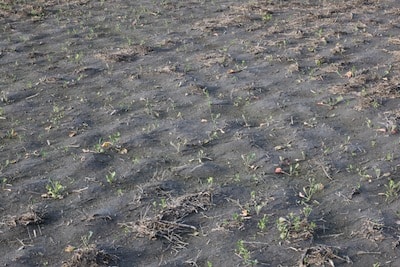
Here are some questions asked at the CCC Excess Moisture meetings in Elgin, Manitoba and Carlyle, Saskatchewan last week. We will post more questions and answers from the unseeded acres meetings at www.canolawatch.org as they come in.
Is tillage a good way to get rid of ruts left after working in wet soils?
Answer: Tillage may be the best solution to correct the problem quickly, but severe ruts may require several passes, so consider the economic cost. If the ruts are not severe, the winter freeze-thaw cycle will provide some benefit, as will the retained moisture from snow in the stubble.
Nitrogen is going to be variable in our fields. How can we manage this without variable rate technology? What rate do we apply as our blanket application rate?
Answer: Nitrogen is always variable throughout a field, and after a wet year without a crop, reserves might actually be better on the hilltops than in low spots. In low areas flooded for long periods, lack of oxygen limits microbial breakdown of organic matter. Therefore nutrients made available through mineralization will be lower than expected in these low-lying areas. Leaching of nitrogen and sulphur and de-nitrification of nitrogen will be higher in those areas as well. Test saturated areas separately. If results are much lower than expected and if you expect these areas to be your more profitable parts of the field in 2012, a broadcast application of extra nitrogen in these areas may be warranted. Then apply an application across the whole field based on soil test results for areas outside the low spots. Treat each field differently. You may be surprised at the differences between fields after a wet year.
What can I expect for herbicide carryover in a wet year vs. a dry year?
Answer: Herbicides that break down by microbial activity may not have broken down in 2011 as fast as expected. Oxygen is required for microbial breakdown. Saturated soil lacks oxygen. So, ironically, residual herbicide breakdown in saturated soils can be as slow as breakdown in a drought year. And since the very wet spring was follow by a very dry late summer and fall in many regions, microbial activity would have been curtailed by lack of moisture through the rest of the season.
Herbicides that break down by hydrolysis (water) — groups 2s and 5s, for example — will have broken down quickly in wet conditions but perhaps very little if applied after the rains stopped. Look at your herbicide records for fields planned for canola in 2012. Talk to a crop protection company rep for advice on any products that may have higher than expected carryover in those fields.
More tips. Click here for more unseeded acres tips. These tips were written after 2010 but in many cases will apply to acres unseeded in 2011, keeping in mind that the wet conditions lasted later in the season in many areas in 2010.
